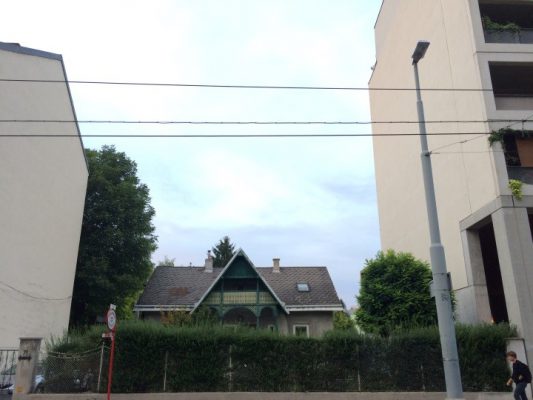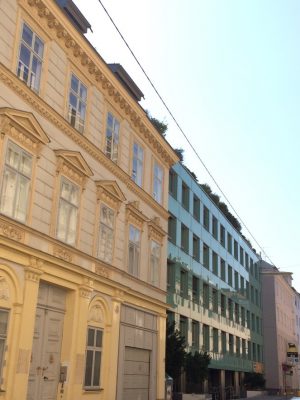 Travelling through the city the other day, I was suddenly struck by the incongruousness of an old little city home, sitting squat and low in between its taller neighbours. It wasn’t a particularly beautiful building and yet there was something impressive in its resolute determination, holding its own as it was amongst the other statelier constructions. I was reminded of the children’s animated movie ‘Up’ which, for those of you who haven’t seen it, tells the story of the elderly Carl as he recalls the various adventures he and his wife Ellie partook in over the course of their life together. This quirky little sketch from Pixar is marketed at children, although like many children’s movies these days, has many subtle lessons which adults can learn from. Across the course of the story, we learn that success isn’t immediate and that hard work, patience and perseverance are required to achieve our goal; that we have to keep going even when things seem bleak; that our final goal may be not be that which we first set out to accomplish but that it can be even more worthwhile and beautiful than we could have initially imagined. In the building of a culture, I think there are many parallels which can be drawn with the above example, particularly in what defines a particular culture as that culture.
Travelling through the city the other day, I was suddenly struck by the incongruousness of an old little city home, sitting squat and low in between its taller neighbours. It wasn’t a particularly beautiful building and yet there was something impressive in its resolute determination, holding its own as it was amongst the other statelier constructions. I was reminded of the children’s animated movie ‘Up’ which, for those of you who haven’t seen it, tells the story of the elderly Carl as he recalls the various adventures he and his wife Ellie partook in over the course of their life together. This quirky little sketch from Pixar is marketed at children, although like many children’s movies these days, has many subtle lessons which adults can learn from. Across the course of the story, we learn that success isn’t immediate and that hard work, patience and perseverance are required to achieve our goal; that we have to keep going even when things seem bleak; that our final goal may be not be that which we first set out to accomplish but that it can be even more worthwhile and beautiful than we could have initially imagined. In the building of a culture, I think there are many parallels which can be drawn with the above example, particularly in what defines a particular culture as that culture.
This is echoed across the city of Vienna in various ways, particularly visible in the architectural styles separating the old from the new through the progression of time. The beauty of the rich heritage of Austria is precisely what attracts the scores of visitors to the country every year, and yet for the Austrians themselves, it is progress in the name of modernity which drives them on, giving rise to the glass-and-steel constructions which would comfortably place one in any modern city in the world.
 Looking at the old and the new standing side-by-side, it also made me question what exactly Austrian culture means to those of us who are visitors in this land. What characteristics do we perceive as necessary in order for us to understand something as Austrian, as being embedded in the Austrian culture? And that further gives rise to the question as to how culture changes over time such that it is distinctly and recognisably different and yet still entirely belonging to that particular people and location. For me personally I treasure the rich heritage of the country that is Austria: once the heart of a massive empire, now still a beautiful little nation in the heart of Europe.
Looking at the old and the new standing side-by-side, it also made me question what exactly Austrian culture means to those of us who are visitors in this land. What characteristics do we perceive as necessary in order for us to understand something as Austrian, as being embedded in the Austrian culture? And that further gives rise to the question as to how culture changes over time such that it is distinctly and recognisably different and yet still entirely belonging to that particular people and location. For me personally I treasure the rich heritage of the country that is Austria: once the heart of a massive empire, now still a beautiful little nation in the heart of Europe.
 I love their dedication to tradition, their homage and respect to those who went before the current generation, those who ploughed the furrow and left the legacy which we visibly see standing today. Those countless men and women who worked hard so that future generations would know what it means to be Austrian. Naturally it would not do to only view history through rose-tinted lenses and it is a great boon that Austria truly is a twenty-first century nation. Yet I dearly hope, that in the search for innovation and modernity, that the Austrian people do not lose sight of the things in common which define them as Austrians, the collective memory which makes a culture.
I love their dedication to tradition, their homage and respect to those who went before the current generation, those who ploughed the furrow and left the legacy which we visibly see standing today. Those countless men and women who worked hard so that future generations would know what it means to be Austrian. Naturally it would not do to only view history through rose-tinted lenses and it is a great boon that Austria truly is a twenty-first century nation. Yet I dearly hope, that in the search for innovation and modernity, that the Austrian people do not lose sight of the things in common which define them as Austrians, the collective memory which makes a culture.
